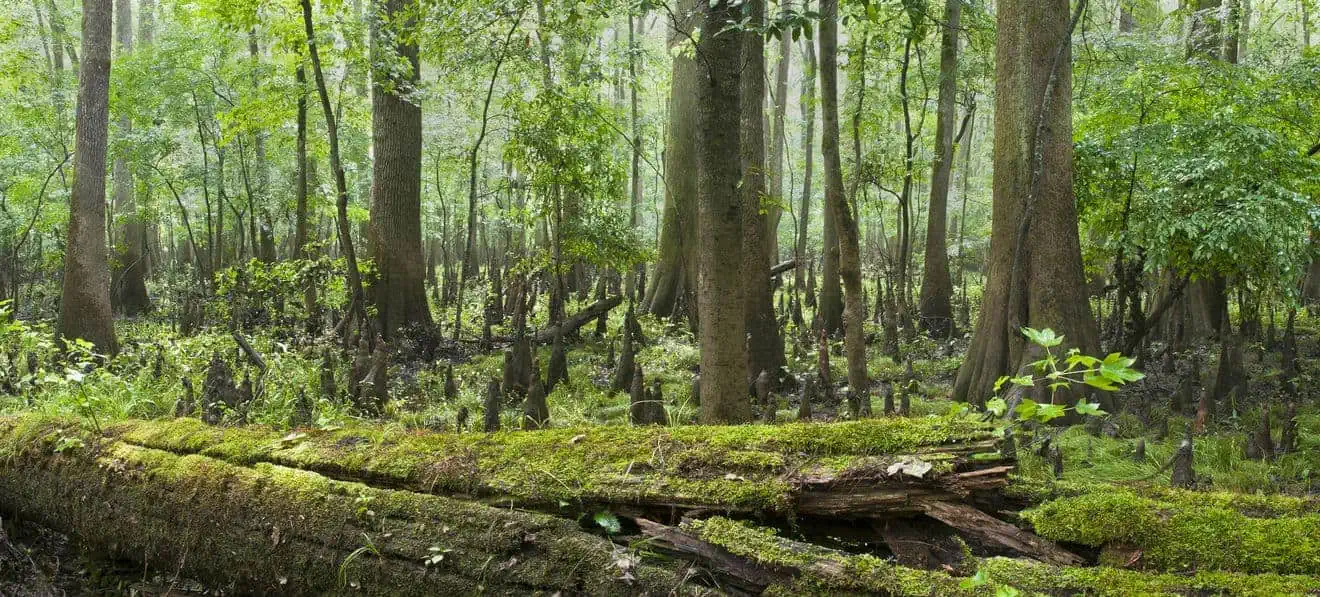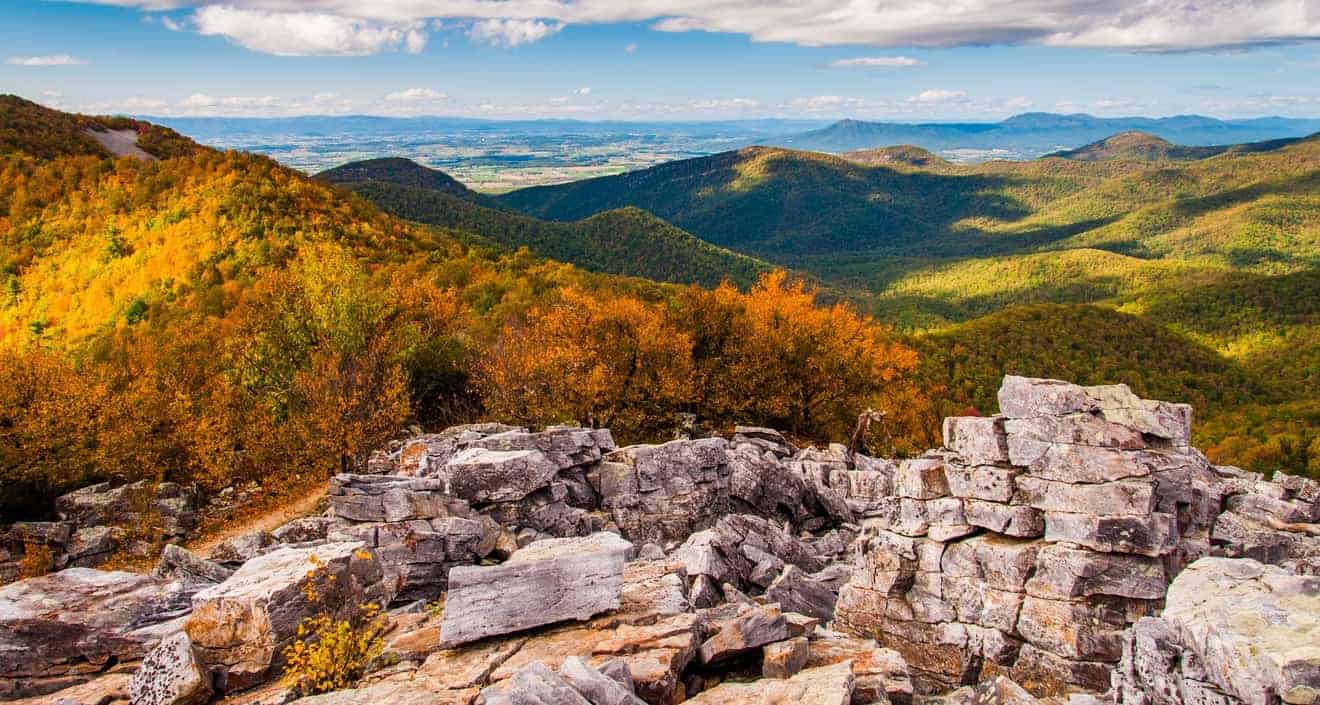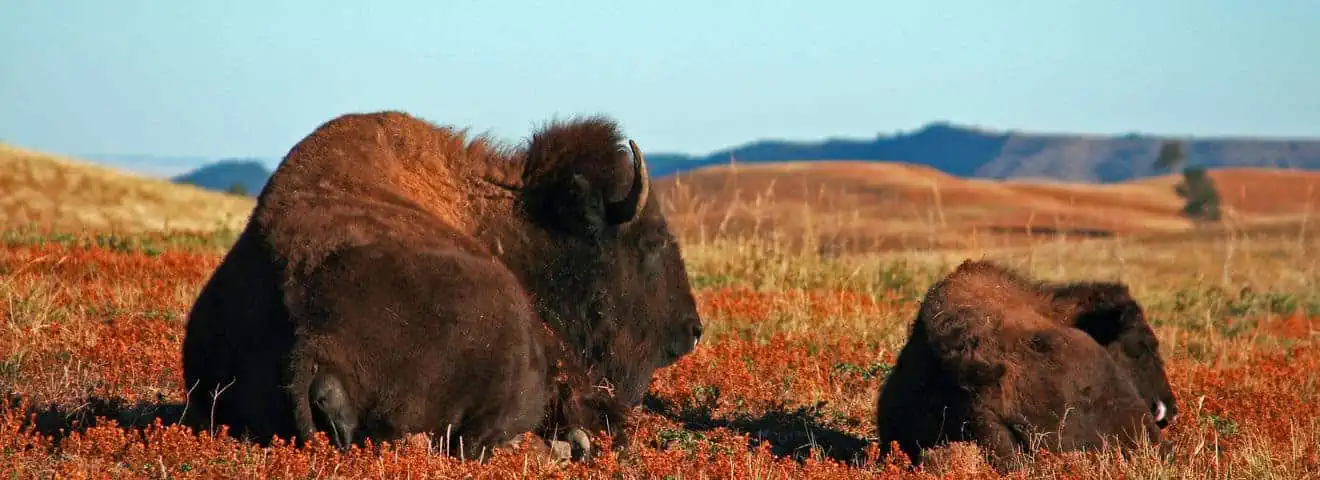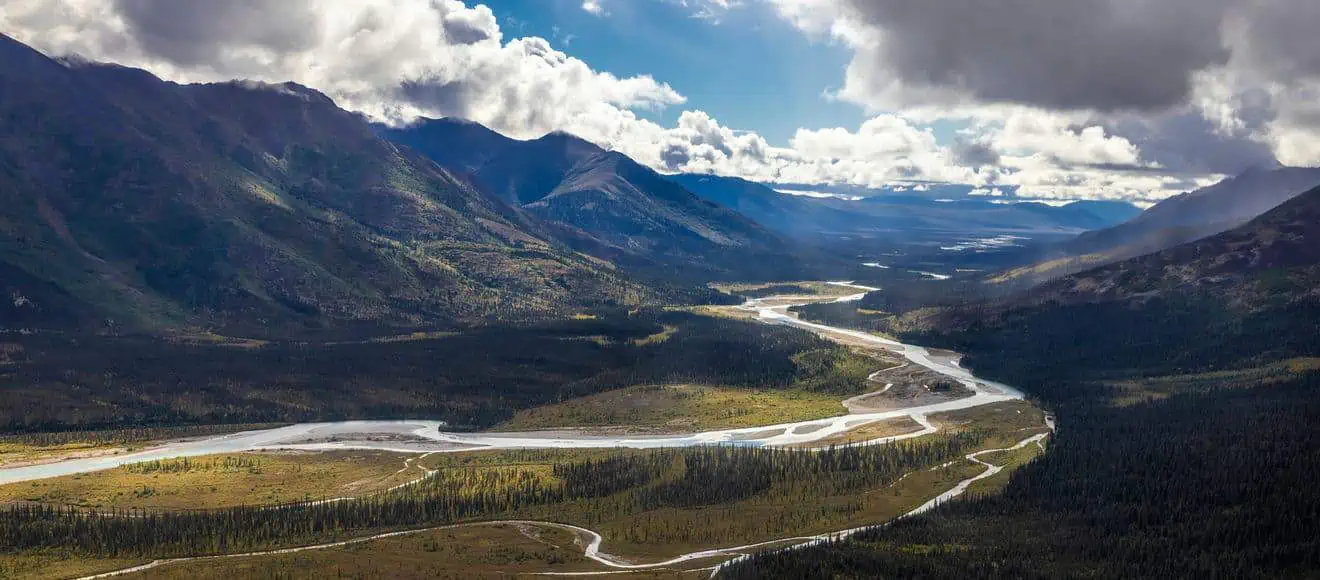A pristine forest that seasonally floods with river water, boasting some of the nation’s oldest trees.
That’s what you can expect at Congaree National Park in South Carolina, a United States park easily accessible through trails and boardwalks that are wheelchair-friendly. Here, you can spot wildlife and paddle on serene rivers in a canoe or kayak.
Contents
What is Congaree National Park?
Congaree National Park is the park that preserves the largest remaining lowland hardwood forest in the United States. The Congaree River meanders through the forest, and the park area stretches along its northern bank and is intersected by several of its tributaries.
Often, this park is referred to as a swamp, but it’s not. In fact, it’s a bottomland where seasonal flooding occurs. Although to the untrained eye, a flooded forest might appear as a swamp, these two environments are quite distinct, both in terms of the flora and fauna that inhabit them.
Among the animals that call the park home, you’ll find various large and medium-sized mammals such as deer, wild pigs, bobcats, coyotes, otters, and armadillos. In addition to various species of fish and amphibians, there’s an abundance of birds of many different species, including several birds of prey and wild turkeys.
Congaree National Park also hosts one of the world’s largest concentrations of champion trees. These are trees that are classified as special or superlative due to their height or size. This pristine forest is home to a particularly high number of them.
How to Get There
The park is located in South Carolina, southeast of the city of Columbia, which is only a 30-minute drive away. It takes, however, two hours to reach it from Charleston.
The Visitor Center is situated in the northern part of the park, where the majority of the trails are also concentrated. You can access it from Old Bluff Road, an offshoot of Bluff Road (which corresponds to State Route 48).
The southern area, on the other hand, is intersected by US-601 highway, from which several roads branch out, providing access to some of the trails.
Hours and Admission Fee
The park is open 24 hours a day, seven days a week, and admission is free. The Harry Hampton Visitor Center is open daily from 9 AM to 5 PM, with six annual closure days: January 1st, February 19th, June 19th, October 9th, November 23rd, and December 25th.
Things to Do in Congaree National Park
The primary activities to enjoy in the park include hiking on the trails and canoeing or kayaking on the rivers. You can also go fishing and birdwatching due to the abundance of diverse bird species. Periodically, guided tours, themed walks, nature talks, and many other events are organized. You can find all the updated events on this page of the official website.
Trails
Most of the trails start from the visitor center, where you can also obtain a map of the park. Generally, these are flat trails, given the nature of the park, and almost all of them are subject to seasonal flooding.
The only ones exempt from flooding are the Elevated Boardwalk, Bluff, Firefly, and Longleaf trails. It’s a good idea to check this page of the official website before visiting the park to be sure which trails are accessible based on seasonal flooding.
Among the easier trails suitable for a day visit, there’s the Boardwalk Loop Trail. It’s approximately 2.5 miles long, starting from the visitor center and winding through an elevated boardwalk that crosses the forest. You can see majestic trees, and it’s accessible even with strollers and wheelchairs, making it suitable for everyone.
Another easy but slightly hilly trail is the Bluff Trail. It starts from the Visitor center, passes through a pine forest, and is approximately 1.8 miles round trip. In the southeastern part of the park, you can explore the Bates Ferry Trail. It begins along US-601 and follows the 1920s ferry road for 2.2 miles until it reaches the banks of the Congaree River.
Canoeing and Kayaking
One of the best ways to explore the park is to obtain a canoe or kayak and paddle on the rivers that run through it. The most suitable river for this is Cedar Creek, a tributary of the Congaree River that flows through the entire northern half of the park. The watercourse passes through areas of pristine and primeval forest where some of the country’s oldest trees grow. Paddling on its waters offers the opportunity to see otters, turtles, wading birds, as well as deer and other animals along the banks.
The Cedar Creek Canoe Trail winds for about 15 miles, starting from Bannister’s Bridge and ending at the confluence of Cedar Creek with the Congaree River. Canoes cannot be rented on-site, but it’s easy to find shops that rent them in Columbia. Alternatively, you can join a guided tour, and this page lists some operators that offer them.
On the river that gives the park its name, the Congaree River Blue Trail meanders for a whopping 50 miles. It’s an itinerary that starts from the city of Columbia (upstream of the park) and ends downstream of the park. Along this river route, you’ll encounter various types of natural environments and gain access to some of the park’s trails via boardwalks.
Places to Stay Near Congaree National Park
Inside the park, there are no lodging facilities. A good place to stay nearby is the Bright Hopkins Home a lovely vacation rental that can accommodate up to six people.
The best option is to stay in Columbia, which is only a half-hour drive from the park and offers a wide variety of hotels. A good downtown option is the Hotel Trundle, a three-star hotel in an excellent location. The Cambria Hotel, also downtown, is also a good choice. For a higher-end hotel, there’s the four-star Graduate Columbia, located at the University of Columbia.








